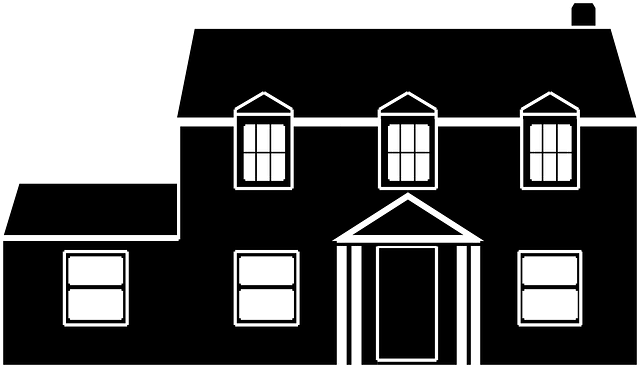HVAC systems account for 30% of a home's energy consumption, but modern smart thermostats optimize this, reducing energy usage by up to 12%. These advanced devices learn user habits, offer precise temperature control, and integrate with smart homes. Innovations like variable-speed compressors and improved insulation further enhance HVAC efficiency. The future includes renewable energy sources and smart integrations, promising sustainable comfort and significant cost savings. Smart thermostats represent a shift towards energy-efficient living, minimizing carbon footprints through precise control and algorithms, while integration with renewable energy lowers utility bills and contributes to environmental conservation.
“In today’s quest for energy-efficient living, understanding and optimizing HVAC (Heating, Ventilation, and Air Conditioning) systems is paramount. These systems significantly impact home energy consumption, accounting for up to 40% of a building’s total energy use. This article explores the transformative potential of innovative HVAC solutions, focusing on advanced technologies and the rise of smart thermostats as game-changers in home efficiency. By integrating sustainable practices with these cutting-edge systems, we can achieve significant energy savings.”
Understanding the Impact of HVAC Systems on Energy Consumption
HVAC (Heating, Ventilation, and Air Conditioning) systems are significant contributors to a home’s energy consumption, accounting for about 30% of an average household’s energy use. This substantial impact highlights the potential for significant energy savings through efficient HVAC technologies. Modern smart thermostats play a pivotal role in this regard, allowing users to precisely control temperature settings and automate schedules. By learning occupants’ habits and adjusting temperatures accordingly, these devices not only enhance comfort but also reduce energy usage by minimizing unnecessary heating or cooling.
Furthermore, advancements in HVAC design, such as variable-speed compressors and improved insulation, contribute to energy efficiency. These innovations enable systems to operate at optimal levels, providing precise climate control while reducing electricity bills. With the increasing adoption of renewable energy sources and smart home integrations, the future of HVAC looks promising, offering a more sustainable and cost-effective approach to comfortable living environments.
The Rise of Smart Thermostats: A Game-Changer in Home Efficiency
The rise of smart thermostats marks a significant shift in how we approach energy-efficient living. These innovative devices have transformed the way we control and optimize our indoor climates, offering numerous benefits for both homeowners and the environment. By leveraging advanced technology, smart thermostats learn our habits, adjust settings automatically, and communicate with other smart home devices to create a more comfortable and efficient space.
Compared to traditional thermostats, their digital counterparts provide precise temperature control and customizable programming. They can reduce energy consumption by as much as 12% annually, cutting down on heating and cooling bills while minimizing the carbon footprint. With real-time data and remote access via smartphone apps, users can monitor and adjust settings from anywhere, ensuring optimal comfort without unnecessary energy waste.
Advanced HVAC Technologies for Optimal Energy Savings
Advanced HVAC technologies are transforming the way we heat, cool, and ventilate our homes and buildings, leading to significant energy savings. Smart thermostats, for instance, have become game-changers in this space. These devices learn your preferences and adjust settings automatically, ensuring optimal comfort while minimizing energy consumption. By using sophisticated algorithms and wireless connectivity, smart thermostats can reduce heating and cooling costs by up to 30%.
Another innovative technology gaining traction is the integration of renewable energy sources with HVAC systems. Heat pumps, for example, offer a more efficient alternative to traditional furnaces and air conditioners by drawing heat from the environment, even in cold weather. When combined with solar panels or other clean energy sources, these systems can further reduce carbon footprints and lower utility bills.
Integrating Sustainable Practices with Innovative HVAC Solutions
Integrating sustainable practices with innovative HVAC solutions is a game-changer for energy-efficient living. Smart thermostats, for instance, play a pivotal role in this transformation. These advanced devices allow homeowners to precisely control temperature settings, optimizing energy usage and reducing carbon footprint. By learning habits and adjusting accordingly, smart thermostats can significantly lower heating and cooling costs without compromising comfort.
Moreover, integrating renewable energy sources like solar panels with smart HVAC systems creates a comprehensive eco-friendly setup. This synergy enables buildings to generate their own power, further enhancing energy efficiency. As a result, residents not only enjoy reduced utility bills but also contribute to a greener planet, making their homes truly sustainable and future-ready.
Innovative HVAC systems, powered by advanced technologies and smart thermostats, are transforming the way we achieve energy-efficient living. By understanding their impact on energy consumption and integrating sustainable practices, we can significantly reduce environmental footprints while maintaining comfortable indoor environments. The future of heating, ventilation, and air conditioning lies in these cutting-edge solutions, offering a promising path towards a greener and more sustainable world.
